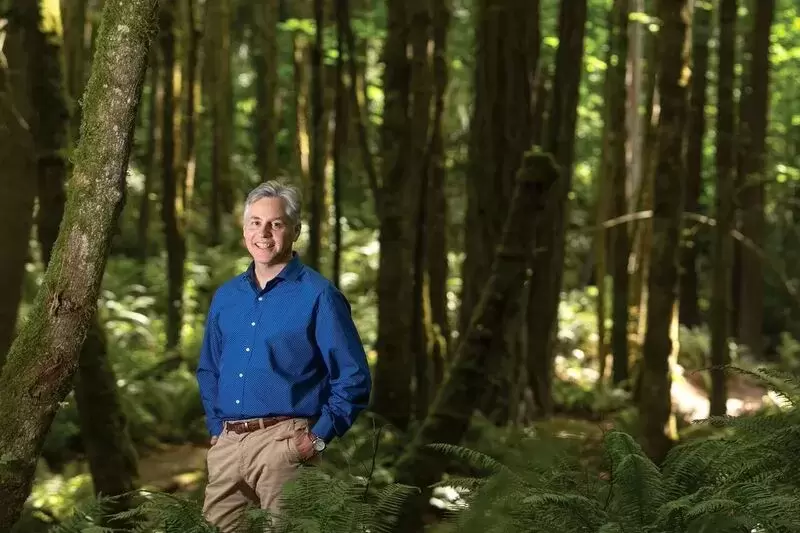The University of Victoria is working in conjunction with First Nations communities in a way that no other university in the world has done yet. UVic recently announced the implementation of an Indigenous law degree program at the university. It’s the brainchild of a handful of Indigenous legal experts, and was made possible with help from UVic, as well as additional funding from the B.C. provincial government.
“The idea of this program is that we are just now beginning to come to grips with the significance of Indigenous legal traditions and their applications,” said Jeremy Webber, Dean of Law at UVic. “That is something that has yet to be fully realized and fully determined… Because it certainly isn’t pre-structured by any kind of state recognition.”
“Right now, our programs only give students the briefest introduction to Indigenous legal traditions, but what we don’t give them is a sense of how they can work with these traditions… how they can build institutions with them,” he added.
According to Webber, the program will follow the regular four-year term law programs fit within now. But in this program the students will gain a background in both common law—known officially as a Juris Doctor- and Indigenous Legal Order, now known as a Juris Indigenarum Doctor. The full program acronym is the JD/JID program.
The program is also a direct response to one of the Truth and Reconciliation Commission’s Calls-To-Action; Number 50 in the TRC document, calls for Equity for Aboriginal People in the Legal System. Included there is a request for the government to help fund the creation of Indigenous law institutes for Indigenous justice. Following this mandate, UVic will build an Indigenous Legal Lodge to better serve the new program, and the Indigenous law community. Once it’s built, students will be taught here, and teams of researchers will carry out very important legal work, said Burrows. He also hopes the Lodge will become a national gathering place for important legal conferences. While the Lodge itself, however, might be a few years away, the program begins its first round this fall.
“Also, a critical part of the program are the two-term long-field schools, that students will do in the community setting,” said Webber. “The communities stipulate an area where they want to take action. Maybe they want to put in place a child welfare regime, or a land management structure.”
“That leads to a series of workshops, discussions, and meetings with knowledgeable people in the communities. A report is produced that captures the legal principles that apply in that area within that people’s traditions,” he said. “In many ways, the field schools are an extension of the work our Indigenous Law Research Unit is doing. It’s immensely powerful work, and it began as a project with the Truth and Reconciliation Commission.”
John Borrows, Canada Research Chair in Indigenous Law, had a major hand in helping to orchestrate the creation of the JD/JID program. Borrows and Val Napoleon, the Law Foundation Chair in Aboriginal Justice and Governance, are who Webber credits with really making the program happen. Borrows, however, credits himself as well as other professors he has had talks with about it over the years, including as far back as 1995. The idea was recurring, and in 2004, Borrows drafted a plan for a potential program after talking with Webber, who was then a Faculty of Law member and not yet the dean. This program plan is now being brought to life.
Borrows has some very concrete examples of how Indigenous law sets itself apart from common law.
“In common law, the authority is found in parliament or the constitution, but for Indigenous Peoples law is basically found in the earth. We look to the stories that are told within the fish, the plants, the animals, the sky,” said Borrows. “We try to take reason away from those to find measurements and standards, or how we can resolve our disputes.”
Borrows used the example of the Maori in New Zealand. In their worldview, the rivers, and all water for that matter, are living creatures—therefore have rights that should be respected. Maori law is known as Tikanga Maori, and because of its strong presence in the country, the New Zealand government passed a law in favor of the Maori belief that the Whanganui River deserves personhood. It is now as respected as any human being, and must even be “consulted with” whenever environmental development might affect it, said Borrows.
“For lots of Indigenous Peoples across Canada, there is also that regard for the world as living, and taking that approach,” added Borrows.
“And then there’s other sources that are different… there are creation stories. And we have laws that deliberate how we talk with one another differently,” he said. “We have circles, potlatches, feasts, and community gatherings that bring folks together in a fashion that’s not like the Parliament. So there are different dimensions involved in how you talk to one another, too.”
And it’s not mandatory for a potential student to be from a First Nations community, or even First Nations, said Borrows. The end result of the program is that students will be a little more well-rounded in terms of their understanding of the various possibilities within law—namely that Canadian common law is not the most sensical, natural form of law, but that it is actually more of a cultural construction.
“One of our goals of the program is to show that you don’t need to be born into a community or have Indigenous ancestry,” he said. “Like that fly on the wall, they could eventually be in a place where that could be helpful. Our communities are working with people to create a safe space for our traditions to be recognized in.”







